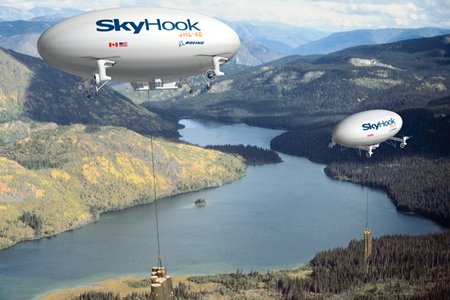Boeing’s defence group and Canadian start-up SkyHook International today announced a five-year-plan to develop and produce a hybrid rotorcraft/airship that can lift a 40t payload as far as 200mi.
The so-called Jess Heavy Lifter, or JHL-40, is launched to service a niche market of commercial oil and mining companies operating in
The Boeing/SkyHook team estimates a potential commercial market of about 60 aircraft. The high upfront costs to launch a new product, however, can be partially offset by leveraging Boeing’s existing technology.

©
The JHL-40, designed by SkyHook founder Peter Jess, will leverage rotor technology from the CH-47 Chinook, avionics and flight controls technology from the 787 and Boeing’s experience as a lead systems integrator.
“If you have to develop all of that technology from scratch on this aircraft we wouldn’t be sitting here today,” said Pat Donnelly, Boeing’s director of advanced rotor systems.
The Boeing/SkyHook also has the benefit of lessons learned from Piasecki Aircraft’s failed attempt to develop a similar, quad-rotor heli-stat. The PA-97 prototype, an airship powered by four H-34 helicopters, was canceled after crashing in 1986.
Boeing’s review of Piasecki’s records attributed the crash to an aerodynamic phenomenon called “dynamic resonance”.
“We are experts in dynamic reactions,” Donnelly said. “Helicopters are a million pieces trying to shake themselves apart.”
SkyHook also is designing the aircraft to be neutrally buoyant, meaning the helium filled envelope is sized to lift the empty weight of the aircraft. The four rotors, which generate 21,000shp, are used to lift a 40t payload.
By comparison, the world’s largest helicopter –
The JHL-40 will be powered by four sets of lifters and thrusters, with the latter generating a total of about 7,000 to 8,000lb-thrust to maintain aircraft stability.
Boeing is leveraging the rotor technology of the CH-47, but perhaps not the engine. Jess said that the CH-47’s Honeywell T55 could face export control problems for a commercial aircraft. The Boeing/SkyHook team is evaluating three engines. The Rolls-Royce 1107C
Source: FlightGlobal.com













